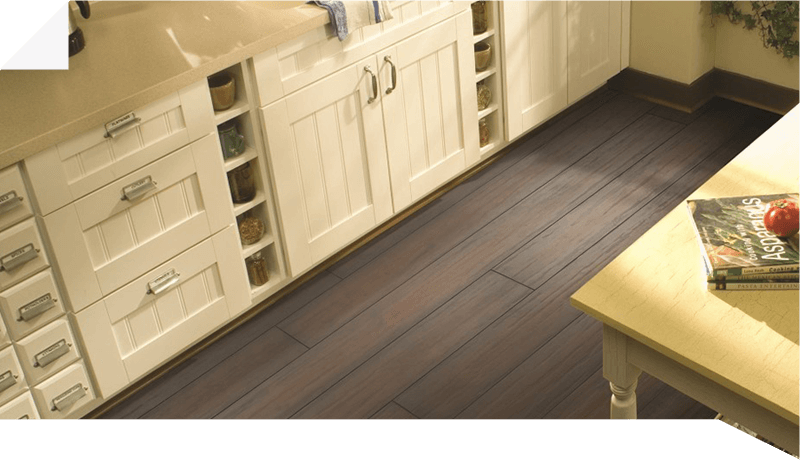How to Install New Flooring

What better way to accomplish updating your living space than to start with a brand new flooring makeover? We know this may be a new topic for many, and Royal Home Flooring has got you covered. Our company has acquired years of experience and insight on how to install new flooring in your home. Each material of flooring has a different installation method, so let’s take a look at the various flooring products that typically get installed.
Underlayment
With any type of flooring installation, an underlayment and subfloor get installed underneath the surface of your flooring of choice. Depending on which flooring you decide to go with, different types of underlayments are necessary for each specific flooring material.
- Plywood: Provides a flat, smooth surface and diminishes knots and voids from underneath the flooring. Typically installed under vinyl and linoleum sheets and tiles.
- Hardboard: Similar to plywood, the results also lead you to a smooth, flat finish, however, hardboard is much thinner than plywood. This layer of underlayment helps level the plywood subflooring.
- Foam or cork padding: Both padding styles add cushioning and help cancel noise underneath your flooring. This material of underlayment typically gets used for laminate and engineered wood installations.
Subfloor
Subflooring is a thick, flat surface that provides extra stability and rests underneath all other layers of surfaces. Typically made of OSB or Plywood.
Now that we understand what goes underneath your flooring, let’s continue to selection. At Royal Home Flooring we offer an extensive variety of American-manufactured, high-quality products, and installation services. Let’s find the right flooring for you.
Hardwood
There are two different types of hardwood: finished and unfinished. Installing unfinished hardwood is a good option if you’re looking to get your flooring stained and refinished. Finished flooring is sanded and sealed for use, and you can walk on it immediately.
Solid and Engineered Hardwood
Solid hardwood is genuine, solid wood built for sanding and refinishing countless times. Engineered hardwood contains a veneer of genuine wood, glued to several layers of plywood underneath. This type of flooring is only meant to be sanded and refinished once or twice throughout its lifespan.
How to Install New Flooring: Hardwood Installation
Installation of hardwood is either glued or nailed down. If your subflooring consists of concrete, it’s best to glue down your hardwood. However, if the subflooring is wooden, either method of installation is acceptable. If you plan to fit your hardwood flooring into joists, it would be necessary to nail them into place.
Carpet
Carpet is flooring produced from woven fabric to shape a particular room. From Berber to Frieze, textured to patterned the carpeted flooring choices are endless.
- Berber: This is a type of carpet known as loop pile. The yarn used is thick and heavy and built into various sized tufts. Typically, Berber carpet has a light, natural color tone with specks of darker colors dispersed throughout.
- Frieze: This is a modern version of the “shag” carpet and is referred to as the twist. Its long fibers appear tightly twisted and help conceal vacuum lines and footprints.
- Textured: This floor covering is cut-pile and gets its look by exposing its fibers to a steam treatment that curls each strand. This gives them a curled and kinked appearance.
- Patterned: Designs can range from simple to bold. This carpet has a rich texture, and its fibers display loops with high/low cuts.
While all of these carpeted styles differ from one another, the installation process is the same all around the board.
How to Install New Flooring: Carpet Installation
A carpet pad must get stapled underneath, perpendicular to the direction you install your carpet. After you lay your carpet, trim off the excess and glue your seams together, you will need to stretch out your carpet. Once you make your final trim, the result: a brand new flooring you will love.
Laminate
Laminate flooring is a hybrid consisting of three layers. The floor covering is on the top, and an image layer and wear layer follows underneath. Once the wood gets exposed to high temperatures and bonded together, an image gets placed over the wood to cover it and form the laminate. The two most common types of laminate flooring are hardwood and tile.
How to Install New Flooring: Laminate Installation
Laminate flooring, considered a floating floor, means it simply snaps together in place without adhesive or nails. This type of flooring doesn’t attach to a subfloor or underlayment, though a subfloor and underlayment are still recommended. Laminate installation is a much easier process and a dryer alternative.
Vinyl Plank Flooring
If you’re looking for long-lasting, affordable, and easy flooring to install, vinyl is the way to go. This flooring gets produced with materials such as fiberglass, PVC vinyl, and plasticizer. This flooring has a much thicker flooring material than regular vinyl.
How to Install New Flooring: Vinyl Plank Installation
Typically, plank installation uses the tongue-and-groove connection system. Each plank snaps together and locks in place. Peel-and-stick vinyl plank installation is another method used to install vinyl flooring planks. Simply peel the adhesive off the backing and stick the planks to the subfloor. It’s that easy.
Free In-Home Carpet Installation Estimate
At Royal Flooring, we pride ourselves on providing the best carpet and flooring installation services in Chicago and Northwest Indiana. Book a free estimate today & get an additional $150 off.
Our team members are all vetted & cleared to interact with the public during your installation. We’ve taken all the precautionary measures to protect both you and us. Read more about our COVID-19 protection measures here.

